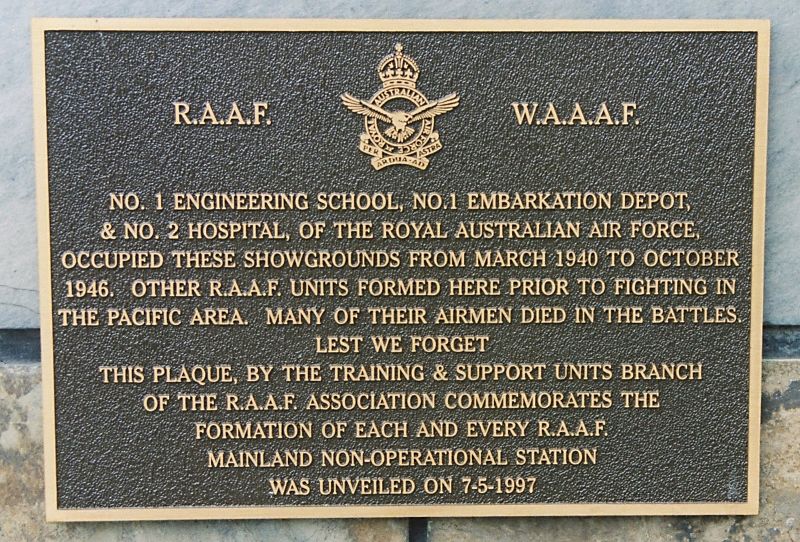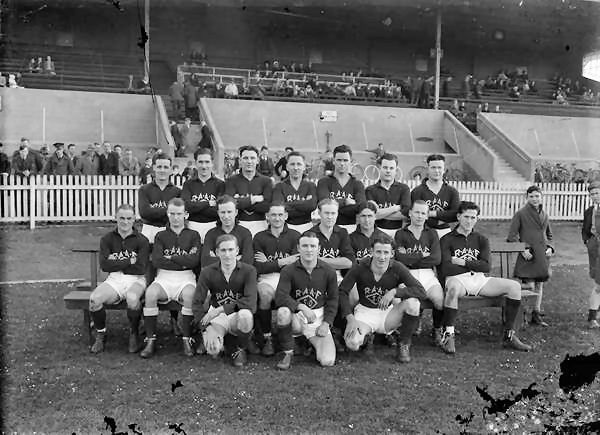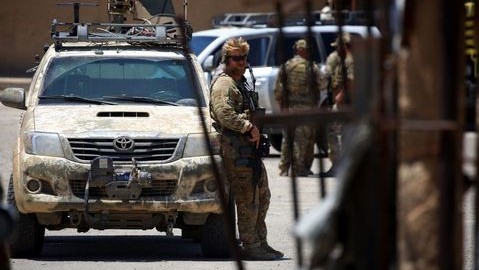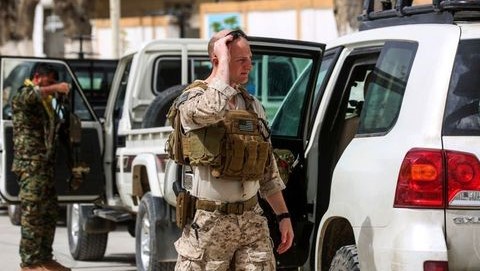|
|
||
|
||
|
Privacy Policy | Editorial Policy | Profit Policy | Join the Association | List of Members | Contact us | Index | Links |
||
|
Back Go to page: 1 2 3 4 5 6 7 8 9 10 11 12 13 14 15 16 17 18 19 20 Forward
|
||
|
Sumpyitis??
The other day, as has been his normal routine for the past few months, John Mac was working on restoring his old yellow and red Ford Pilot. He had the side valve V8 donc, three-speed crash box, diff and cut in half 44 in which were a few litres of cleansing petrol, all on the yellow shag pile carpet in his lounge room as he says the shag pile feels nice between his toes while he’s working and he also likes to watch and keep up with Dr Phil on the TV. And being the careful and thoughtful new age guy that he is, so as not to dirty she who must be obeyed's carpet and to maintain harmony in the household, very important he says, he’d laid out pages from Post and Pix magazines on which to sit the bits.
|
||
|
Standing L-R: Lisa Nicolet, Karina Smith. Seated L-R: Katie Messor, “Man about town” John McDougall, Riaza Manricks.
|
||
|
With the bottom end all torqued up, he was just about to start on the top end and do a valve grind when he decided he’d had enough for the day, Dr Phil had once again sorted out two or three miserable lives and as he wasn’t all that interested in Judge Judy, he decided to take a few hours off and shout himself lunch at Brisbane’s finest, the Jade Buddha.
Throwing a couple of nicked Queensland Health white towels over the bits, he hit the shower with the scrubbing brush and tin of Swarfega. 30 or 40 minutes later, with the fingernails scrubbed clean of Rolls Royce compound and with a clean shirt and undies on, he jumped into the Austin A30 and headed for town.
Little did he know, that his arrival at the Jade Buddha had been spotted by several lovely young ladies who work at one of the major banks in the city. While looking out the window from their 40th floor smoko room where they were playing 500 while having their lunch and discussing bosoms, bottoms and babies, the girls spotted the A30 pull up at the kerb and saw “man about town” enter the restaurant. An irresistible urge over took them and throwing their banana and sugar sandwiches (on rye bread) and diet cokes into the bin, they smashed their way into the lift, raced across the road on the red and entered the Jade all puffing and panting.
“Man about town” was seated near the river, quietly having a cleansing pre-lunch ale, when the girls swooped on him and couldn’t be re-moved – see pic above. After an hour or so, management was compelled to call the Fire department, the Police Swat Team and half a dozen Adgies from Amberley before “Man about town” could be extricated from the girls’ clutches (or was it the girls from “Man about town”??).
We were told of this disturbing incident by “Man about town” who suggested Sumpyitis had just as much allure as Radtechitis, but we’re not sure. After speaking to the lovely young ladies, we’re convinced they were attracted to his distinctive after shave lotion, which we know is a 30 : 30 : 30 blend of Avtur, WD40 and Skydrol hydraulic oil.
The girls have all worked at the ANZ Bank in the city for about 10 years and love it. They occasionally also shout themselves lunch at the Jade Buddha, and why not.
With lovely staff like that – you’d seriously think about changing banks wouldn’t you!!
|
||
|
|
||
|
|
||
|
The MCG and World War II
The Melbourne Cricket Ground (MCG), also known simply as "The G", is located in Yarra Park, Melbourne. It is home to the Melbourne Cricket Club, is the 10th-largest stadium in the world, the largest in Australia, the largest in the Southern Hemisphere, the world’s largest cricket ground by capacity and has the tallest light towers of any sporting venue. The MCG is within walking distance of the city centre and is served by both the Richmond railway station and the Jolimont railway station, East Melbourne. It is part of the Melbourne Sports and Entertainment Precinct.
|
||
|
|
||
|
Since it was built in 1853, the MCG has been in a state of almost constant renewal. It served as the centrepiece stadium of the 1956 Summer Olympics, the 2006 Commonwealth Games and two Cricket World Cups: 1992 and 2015. It is also famous for its role in the development of international cricket; it was the venue for both the first Test match and the first One Day International, played between Australia and England in 1877 and 1971 respectively. The annual Boxing Day Test is one of the MCG's most popular events. Referred to as "the spiritual home of Australian rules football" for its strong association with the sport since it was codified in 1859, it hosts Australian Football League (AFL) matches in the winter, with at least one game held there in most (if not all) rounds of the home-and-away season. The stadium fills to capacity for the AFL Grand Final.
Founded in November 1838 the Melbourne Cricket Club (MCC) selected the current MCG site in 1853 after previously playing at several grounds around Melbourne. The club’s first game was against a military team at the Old Mint site, at the corner of William and Latrobe Streets. Burial Hill (now Flagstaff Gardens) became its home ground in January 1839, but the area was already set aside for Botanical Gardens and the club was moved on in October 1846, to an area on the south bank of the Yarra about where the Herald and Weekly Times building is today. The area was subject to flooding, forcing the club to move again, this time to a ground in South Melbourne.
It was not long before the club was forced out again, this time because of the expansion of the railway. The South Melbourne ground was in the path of Victoria’s first steam railway line from Melbourne to Sandridge (now Port Melbourne). Governor La Trobe offered the MCC a choice of three sites; an area adjacent to the existing ground, a site at the junction of Flinders and Spring Streets or a ten-acre (about 4 hectares) section of the Government Paddock at Richmond next to Richmond Park.
1857 map of the Police Paddock in East Melbourne
This last option, which is now Yarra Park, had been used by Aborigines until 1835. Between 1835 and the early 1860s it was known as the Government or Police Paddock and served as a large agistment area for the horses of the Mounted Police, Border Police and Native Police. The north-eastern section also housed the main barracks for the Mounted Police in the Port Phillip district. In 1850 it was part of a 200-acre (81 ha) stretch set aside for public recreation extending from Governor La Trobe’s Jolimont Estate to the Yarra River. By 1853 it had become a busy promenade for Melbourne residents.
An MCC sub-committee chose the Richmond Park option because it was level enough for cricket but sloped enough to prevent inundation. That ground was located where the Richmond, or outer, end of the current MCG is now.
At the same time the Richmond Cricket Club was given occupancy rights to six acres (2.4 hectares) for another cricket ground on the eastern side of the Government Paddock. At the time of the land grant the Government stipulated that the ground was to be used for cricket and cricket only. This condition remained until 1933 when the State Government allowed the MCG’s uses to be broadened to include other purposes when not being used for cricket.
In 1863 a corridor of land running diagonally across Yarra Park was granted to the Hobson’s Bay Railway and divided Yarra Park from the river. The Mounted Police barracks were operational until the 1880s when it was subdivided into the current residential precinct bordered by Vale Street. The area closest to the river was also developed for sporting purposes in later years including Olympic venues in 1956.
The first grandstand at the MCG was the original wooden members’ stand built in 1854, while the first public grandstand was a 200 metre long 6000 seat temporary structure built in 1861. Another grandstand seating 2000, facing one way to the cricket ground and the other way to the park where football was played, was built in 1876 for the 1877 visit of James Lillywhite's English cricket team. It was during this tour that the MCG hosted the world's first Test match.
|
||
|
|
||
|
Tiger country.
In 1881 the original members' stand was sold to the Richmond Cricket Club for £55. A new brick stand, considered at the time to be the world’s finest cricket facility, was built in its place. The foundation stone was laid by Prince George of Wales and Prince Albert Victor on 4 July and the stand opened in December that year. It was also in 1881 that a telephone was installed at the ground and the wickets and goal posts were changed from an east-west orientation to north-south. In 1882 a scoreboard was built which showed details of the batsman's name and how he was dismissed.
When the Lillywhite tour stand burnt down in 1884 it was replaced by a new stand which seated 450 members and 4500 public. In 1897, second-storey wings were added to ‘The Grandstand’, as it was known, increasing capacity to 9,000. In 1900 it was lit with electric light.
|
||
|
|
||
|
More stands were built in the early 20th century. An open wooden stand was on the south side of the ground in 1904 and the 2084-seat Grey Smith Stand (known as the New Stand until 1912) was erected for members in 1906. The 4000-seat Harrison Stand on the ground’s southern side was built in 1908 followed by the 8000 seat Wardill Stand in 1912. In the 15 years after 1897 the stand capacity at the ground increased to nearly 20,000.
In 1927 the second brick members’ stand was replaced at a cost of £60,000. The Harrison and Wardill Stands were demolished in 1936 to make way for the Southern Stand which was completed in 1937. The Southern Stand seated 18,200 under cover and 13,000 in the open and was the main public area of the MCG. The maximum capacity of the ground under this configuration, as advised by the Health Department, was 84,000 seated and 94,000 standing.
The Northern Stand, also known as the Olympic Stand, was built to replace the old Grandstand for the 1956 Olympic Games. By Health Department regulations, this was to increase the stadium's capacity to 120,000; although this was revised down after the 1956 VFL Grand Final, which could not comfortably accommodate its crowd of 115,802. Ten years later, the Grey Smith Stand and the open concrete stand next to it were replaced by the Western Stand; the Duke of Edinburgh laid a foundation stone for the Western Stand on 3 March 1967, and it was completed in 1968; in 1986, it was renamed the Ponsford Stand in honour of Victorian batsman Bill Ponsford. This was the stadium's highest capacity configuration, and the all-time record crowd for a sporting event at the venue of 121,696 was set under this configuration in the 1970 VFL Grand Final. (Carlton 17.9 V’s Collingwood 14.17)
|
||
|
|
||
|
The MCG was the home of Australia’s first full colour video scoreboard, which replaced the old scoreboard in 1982, located on Level 4 of the Western Stand. A second video screen added in 1994 almost directly opposite, on Level 4 of the Olympic stand. In 1985, light towers were installed at the ground, allowing for night football and day-night cricket games.
In 1988 inspections of the old Southern Stand found concrete cancer and provided the opportunity to replace the increasingly run-down 50-year-old facility. The projected cost of $100 million was outside what the Melbourne Cricket Club could afford so the Victorian Football League took the opportunity to part fund the project in return for a 30-year deal to share the ground. The new Great Southern Stand was completed in 1992, in time for the 1992 Cricket World Cup, at a final cost of $150 million.
The Ponsford Stand undergoing reconstruction in 2003.
The 1928 Members' stand, the 1956 Olympic stand and the 1968 Ponsford stand were demolished one by one between late 2003 to 2005 and replaced with a new structure in time for the 2006 Commonwealth Games. Despite now standing as a single unbroken stand, the individual sections retain the names of Ponsford, Olympic and Members Stands. The redevelopment cost exceeded A$400 million and pushed the ground's capacity to just above 100,000. Since redevelopment, the highest attendance was the 2017 Grand Final of the AFL with 100,021 (Richmond – the premier club!!), followed by 100,016 in the 2010 Grand Final.
|
||
|
|
||
|
From 2011 until 2013, the Victorian Government and the Melbourne Cricket Club funded a $55 million refurbishment of the facilities of Great Southern Stand, including renovations to entrance gates and ticket outlets, food and beverage outlets, etc., without significantly modifying the stand. New scoreboards, more than twice the size of the original ones, were installed in the same positions in late 2013.
The War years.
In October 1941, the Menzies Government collapsed. For some time, it had been divided and unable to provide effective leadership. Over the next four months, the new Prime Minister, John Curtin, faced the worst series of crises in Australian history. On the 19th November 1941, after its encounter with the German raider Kormoran, HMAS Sydney was lost, the Japanese attacked Malaya and Pearl Harbour in December; with the fall of Singapore on the 15th February, 1942, the AIF Eighth Division was lost and four days later Darwin was bombed. These events confronted Australia with two nightmares it had long dreaded, a hostile Asian power was on the march and the defence shield which Britain had long provided was now in tatters.
In the midst of these disasters, John Curtin outlined in the Melbourne Herald policies which were to shape profoundly the immediate history of the Melbourne Cricket Ground: Without inhibitions of any kind, he made it quite clear that Australia would look to America, free of any pangs as to our traditional links or kinship with the United Kingdom. Then, in February 1942, Curtin announced the conscription of all of the nation’s resources, human and material, for ‘the purposes of war’ and introduced regulations which enabled the government ‘to require the use of any property in the Commonwealth for the prosecution of the war.’
Even before Curtin spoke, officers from Military Headquarters inspected the Melbourne Cricket Ground with a view to using the stands on the northern sides to house troops. After MCC secretary Vernon Ransford contacted the Ground’s Trustees on the subject, it seemed that the Army might reconsider its plans. Late on the afternoon of the 2nd April, Ransford was stunned to receive notice that ‘the whole of the Ground was required for Commonwealth purposes as from the 7th day of April 1942’ and that the MCG was to be handed over to the Port Quartermaster, United States Armed Forces in Australia.
From 1942 until 1945 it was occupied by (in order):
Over the course of the war, more than 200,000 personnel were barracked at the MCG. From April to October 1942, the US Army’s Fifth Air Force occupied the ground, naming it "Camp Murphy", in honour of officer Colonel William Murphy, Signal Corps, US Army, who was killed when the lone B-18 Bolo bomber he was onboard, was shot down by a Japanese fighter aircraft on 3 February 1942 over Java. The Bolo was piloted by Major Austin Straubel.
In 1943 the MCG was home to the legendary First Regiment of the First Division of the United States Marine Corps. The First Marine Division were the heroes of the Guadalcanal campaign and used the "cricket grounds", as the marines referred to it, to rest and recuperate. On 14 March 1943 the marines hosted a giant "get together" of American and Australian troops on the arena. The Marines were accommodated in the covered spectator stands at the G while smaller camps were set up at the South Melbourne Cricket Ground and at Mount Martha and Ballarat in regional Victoria. Officers lived in greater style, often enjoying private apartments.
The ground was also sometimes referred to as "RAAF Ransford", after Melbourne Cricket Club (MCC) secretary Vernon Ransford (right). The modest Ransford was apparently reluctant to use this term in MCC minutes and continued to refer to the Ground - quite incorrectly - as "Camp Murphy".
Since February 2, 1942, units of the United States Army Air Forces had been stationed in Melbourne. Some of these were quartered at the Ground but they were gone by November 7, when the Ground was declared to be the home of RAAF’s No.1 School of Technical Training. However, the 1500 RAAF personnel did not move in until early December.
Possibly the intervening period was used to make some necessary alterations. The Department of the Interior erected nine hot showers in the ground level lavatory at the western end of the Pavilion. Sadly, this luxury did not extend to the Old Public Stand, where 21 cold showers were installed, with another 12 in the Outer Concrete Stand. Fortunately for those facing these torrents of cold water, the RAAF vacated the MCG on January 5, 1943, ‘as it was required for occupation by US forces.’
|
||
|
|
||
|
The first wave of Marines moved in a day later. The Ground became a hive of activity. Vernon Ransford reported that: Additional works to provide all necessary sleeping and messing accommodation for 3600 troops were commenced on Tuesday 5th ... and such rapid progress was made that most of the works were completed by Saturday 16th ...
The secretary’s outline of these works provides the most comprehensive description of the wartime Melbourne Cricket Ground. All the seats were removed from the lower tier of the Grey Smith Stand, and alternate rows from the top tier, with double and triple-decker metal bunks being screwed to the wooden floors. These provided accommodation for 600. The entire area had to be wired to provide electricity. Tarpaulins enclosed the front of the Stand. One of the players’ dressing rooms was used by some sergeants as sleeping quarters, with the other being used as one of several Quartermasters Stores. Administrative Offices were located in the Tea Rooms, while the Bar became a Wet Canteen for NCO’s.
In the Pavilion, the Camp Commandant took over the VCA Room as an office. The rest of the building was used for messing and sleeping accommodation for the officers. At various points, guards prevented ‘all but officers from going into the Pavilion’, though other ranks were permitted to use the bar on the ground floor as a Wet Canteen. Mercifully, they were given access to the nine hot showers installed during the RAAF’s occupation. At the western end of the Old Public Stand, over the Tea Room in the Members Reserve, the seats were removed to accommodate 125 men. Curiously, only the western side and one tier of this stand were blocked off to the top. Four other tiers were blocked only to the ‘height of the pillar collar’, probably to ensure that the inmates had plenty of ventilation. The Tea Room was a Dry Canteen which, Ransford noted, was an ‘exceedingly busy section of camp’.
Further east in the Old Public Stand, the RAAF’s cold showers remained. Ten were in the ladies’ retiring room and the latrine near the Gymnasium held the others. Each section contained ablution tables. The Gymnasium was used by the dentist and medical officers, while the public Tea Room served ‘as a reading and recreation room in charge of Padre Olton’ to whom Ransford loaned an old piano and 81 wooden chairs. According to the Secretary, this room was ‘always full’.
On the lower level of the Southern Stand, officially termed the ‘New Concrete Outer Stand’, double-decker bunks accommodated 1000 men ‘between Bays 1 and 2 to 7 and portion of 8.’ (At that time, the numbering system for Bays in the Southern Stand began with Bay 1 at the eastern end.) The front of the lower level was enclosed with asbestos cement sheeting, which was also used to block the back to a height of six feet. Bays 8 to 15 provided messing accommodation for 1600. Asbestos cement sheeting enclosed this area in the front, ‘with 15-inch fly wire’ at the top. In the upper level, Bays 2 to 16 provided sleeping accommodation for 2000 ‘by means of double-decker bunks (metal) placed same way as seats. These bunks have 2 short and 2 long legs to provide for concrete rises and are clipped on to the seats by two brackets. The seats were not damaged in any way.’ Four rows from the front, the upper tier was blocked with asbestos cement sheeting 16 ft. high ...’ At the back, Masonite sheets, four feet high, were tied to the woven wire which covered the openings.
Three kitchens were built off the roadway under the Southern Stand. One was equipped with gas, but the others used fuel. While these were being constructed, cooking was done ‘by means of field kitchens located in the area at the back of the scoreboard.’ Also in that section were two mess rooms, ‘fly-wired with seating accommodation for 400 men’, as well as two cool rooms and refrigerated store rooms. In various sections of the latrines, 64 hot and cold showers were installed, along with several ablution tables fitted with mirrors for shaving. A 3000-gallon hot water boiler, manned by three certificated AIF men, provided ‘ample’ hot water for the officers in the Pavilion.
Vernon Ransford, always at pains to protect the Melbourne Cricket Club’s interests and assets, was pleased that all the alterations were achieved with little real damage. His concerns were shared by the Camp Commandant, Lieutenant Merles, whom he felt ‘has been most helpful in many ways and I feel certain that MCC interests will be safeguarded whilst he is at the Ground.’ Nevertheless, an air of pessimism tinged the secretary’s outlook:
“In view of the large amount spent in these additions and alterations, it is quite possible that the Ground will be used by the Authorities for some time. I understand that the US people are desirous at present of using it as a rest Camp for troops from the front line.”
Gerald Healy was among the first Marines housed at the Ground. A member of the 3rd Battalion’s First Platoon of Regimental Weapons Company, he recalled his welcome in Melbourne as ‘a fantastic event’. From the pier, the Marines boarded a train for the trip to the MCG. Somewhere along the route, ‘people put tables across the tracks, which stopped the train and we partook of wonderful cold beer.’ Everywhere, there were people hollering, school kids hollering, and most of the people saying “You Marines are now ‘Our Boys’.”
A week later, the 2nd Battalion disembarked from the train, to be met with equal enthusiasm at Richmond: “A small Australian band played music on the pier ... We boarded trains and after a brief ride got off and formed on the platform of an elevated station across from a factory that had hundreds of girls hanging out the windows waving and cheering.
After unloading in Melbourne, the 1st Service Battalion were taken by truck to the Melbourne Cricket Club Ground. Scuttlebutt suggested that the units lodged at the Ground were there because they were led by the First Division’s senior regimental commander. Colonel Clifton B. Cates was a World War I veteran who commanded Combat Group B, to which the First Regiment of the Division belonged. George Shaffer, who ‘rode shotgun in his Jeep’ on Guadalcanal, describes Cates as ‘a General MacArthur type ... an outstanding officer and a great man ... brilliant and fearless.’ It was a common judgment. In March, Clifton Cates returned to the United States. As a Brigadier General, he led the Fourth Division at Iwo Jima; then, ahead of 39 other generals, was appointed Commandant of the US Marine Corps. In January 1943, Shaffer and Dick Lyons shared the impression that Cates ‘had first pick of quarters for his men.’ Other regiments went to Ballarat and to Balcombe, where the Division was presented with a Presidential Citation for its deeds on Guadalcanal.
Whatever the particular reason for their presence, 1650 Marines arrived at the Melbourne Cricket Ground on the afternoon of January 6, 1943. Vernon Ransford reported that they ‘immediately took up their quarters.’ Within three weeks, the MCG held 3600 troops, including 184 officers.
In Brisbane, an officer had described the men as ‘ragged, still dirty, thin, anaemic, sallow, listless.’ Fred Guarino explained that Guadalcanal had left the men ‘undernourished and dehydrated.’ In Melbourne, all of these problems remained. A British colonel who watched the 7th Regiment arrive said that, in the Middle East, he had never seen men as tired or as worn’. The doctor in charge of the US Army’s 4th General Hospital told General Vandegrift ‘Had I room I would suggest we send this whole regiment to the hospital. Lord knows they look as if they need it.’
|
||
|
|
||
|
The worst cases, of course, were sent to the 4th General Hospital (now the Royal Melbourne - above). A lot of them experienced the “hot and colds” along with the shakes, suffering from malaria and it was not uncommon for the locals unfamiliar with the tropical disease concluding that the victims were drunk, though, at times, their conclusion was probably correct.
As late as April 1943, 3000 First Division men were still suffering from malaria. For some men full recovery took years.
In Melbourne, another problem emerged. ‘Each man was issued nine Australian wool blankets. They used five blankets as a mattress and the others for cover.’ A lot of men got scabies after receiving them due to some not being properly fumigated.’
Australian Air Force personnel who later used the MCG, almost to a man, spoke first and foremost of the bitter cold. Curiously, the Melbourne chill figures less prominently in Marine recollections though some remember it as being cold and very damp. Most wore long underwear, “Aussie” wool sweaters and six or eight wool blankets on their cot. They would crawl into bed and shiver for 15 minutes until the bed dried out ... some remember it as like crawling into a tub of ice water.
The MCG’s image as ‘Heaven’ was undoubtedly aided by the absence of tight discipline in the first weeks. The first month was sort of open gate policy. The bed was there, food and lodging but little or no obligation to stand muster. Whoever was in stood roll call. Forty guys would ‘Yo, here, yes, present’ to any name called. ‘All present and accounted for, sir’. Then there were the extensive facilities - the Ground was ‘all set up with plywood shielding their living quarters from the elements ... The shower and toilet facilities were great and mess halls were plentiful and even the Lock-up was big ... all the conveniences needed in one compact area.’
The Lock-up was not without inhabitants. The clank of ankle-chained prisoners marching lockstep to meals became familiar music in the lower halls three times a day. The same chains heard at shower times attracted little attention. Bread and water and solitary confinement men took their rations in their cells. On the first few nights in Melbourne, the ‘wet’ canteen under the Pavilion, ‘a large room with tables and a long bar’, was ‘jammed’. Perhaps this was the canteen known as the ‘Slop Shoot’. Some enjoyed their bottled liquor outside in Yarra Park.
Not all of the drinking involved liquor. Something of a surprise was experienced by the locals who were serving the drinks that first day. A large percentage of the Marines in the 1st Regiment were still in their teens. They had not had any fresh milk in six months or so. Those fellows poured down milk in astonishing quantities. It was probably the thing that started them on the road to recovering their weight and strength and health.
A lot remember Young and Jackson’s, and another pub called Hosie’s (corner of Flinders and Elizabeth Sts – now gone) The pubs closed at 6 p.m., so they would go to dinner where you drink more beer until 8 p.m. A restaurant called Ricco’s in Spring St was one of their favourites.
|
||
|
|
||
|
A way from the Melbourne Cricket Ground, the Marines found a city that
was only too willing to welcome them. They went roller skating at
Wirth’s in St Kilda Road. For ‘tuppence’, they took tram rides to St
Kilda, where they went to the beach or Luna Park or skated on the ice at
the St Moritz. They
The RAAF at the “G”.
During the War, the MCG as well as the Melbourne Showground were used for essential purposes and there was no prospect of the US forces or the RAAF vacating either while the war raged.
No. 1 Engineering School, No. 1 Embarkation Depot, and No. 2 Hospital of the Royal Australian Air Force occupied the showgrounds from March 1940 to October 1946. The RAAF had spent huge sums on equipping and fitting up various showground buildings as workshops, while the MCG, was used mainly as a personnel depot and transit centre where airmen were mustered before and after movement. The MCG was perfect for this use as the available space and its location were ideal. Aftr the US forces left, at any-one time there were usually about 3,000 RAAF members at the MCG, and 600 airmen from a technical training school were permanently accommodated there.
During the War, the continued use of the Melbourne Cricket-ground as an RAAF depot was most essential, all buildings were occupied to absolute capacity. They housed RAAF and WAAAF and provided accommodation for the movement of large groups of servicemen to and from operational areas. Because of the high cost of restoring the turf, it was agreement with the MCC that no use would be made of the grassed sports area, except for occasional parades and the club, grounds and buildings were maintained by the MCC's own staff, thus providing added protection.
Approximately 1500 personnel from No.1 School of Technical Training were located at the MCG from 3 December 1942 to 5 January 1943 after which the RAAF's No.1 Embarkation Depot moved in from 3 November 1943 to 30 April 1944. No.1 Personnel Depot (1 PD) took up residence from 1 May 1944 to 29 October 1945.
Early in the war, throughout 1940 and 1941, the ground continued to host first-class cricket and League football. In February 1940, there was a cricket match between the Second AIF and the Third Division. In August, a VFL Patriotic Premiership was held, with all proceeds going to patriotic funds. The contest, billed as the first time that all twelve teams would appear on the one ground on the same day, was won by St Kilda.
Three months later, Prime Minister Menzies performed the Opening Ceremony of the First Athletic Championships of the Australian Fighting Forces, with the Army’s Lieutenant Don Bradman making the Declaration of Loyalty. In August 1941, the VFL conducted another Patriotic Carnival, but by then it was becoming harder for Australians to escape the seriousness of the war and its growing impact on their existence. The Melbourne Cricket Club’s Roll of Honour listed nine names, with several other members reported either as missing or prisoners of war.
A couple of new arrivals, a WAAAF and an Airman about to start their clearances.
Group portrait of WAAAF personnel who were domiciled in the Ransford barracks, Melbourne Cricket Ground area of No. 1 Personnel Depot. March 1945.
|
||
|
|
||
|
The wonderful Voluntary Aid Detachment (VAD) members at the Melbourne Cricket Ground during an inspection by the Governor General. April 1941 |
||
|
|
||
|
|
||
|
The most popular men of the day at the get together function when the United States Marine Corps entertained Australian Servicemen at the Melbourne Cricket Ground, these marines had no need to turn off the tape between cups, as business was so brisk. (Nothing’s changed). The Australian sailor toasts, and congratulates, the Marines on their splendid efforts. |
||
|
|
||
|
|
||
|
The get together function at the Melbourne Cricket Ground when the United States Marine Corps were hosts to Australian servicemen. Here Marines demonstrate American hospitality to members of the Australian Forces and are doing so in a most appropriate manner. This gallon jar was replenished several times during the evening to the satisfaction of the very appreciative guests. March 1943. |
||
|
|
||
|
|
||
|
Australian and United States Servicemen toast each other at the allied forces get together night at the Melbourne Cricket Ground. |
||
|
|
||
|
|
||
|
Popular (at the time) singer Gladys Moncrieff with servicemen at the allied forces get together at the Melbourne Cricket Ground. |
||
|
|
||
|
|
||
|
These wonderful Australian women answered the call to war service in their thousands and have joined an organisation known as the Australian Women's Legion to work as nurses, Air Raid Precaution Officers and Army, Navy and Air Force Auxiliaries. This group is marching along a suburban street en route to take part in a parade of the organisation at the Melbourne Cricket Ground which will be reviewed by the Governor-General of Australia, Lord Gowrie. |
||
|
|
||
|
|
||
|
Members of the Australian Women's Legion on parade at the Melbourne Cricket Ground for inspection by the Governor-General of Australia, Lord Gowrie. These women answered the call to war service and many thousands worked as nurses, Air Raid Precaution Officers and Army, Navy and Air Force Auxiliaries. April 1941. |
||
|
|
||
|
|
||
|
A group of members of the Australian Women's Legion wearing their gas-mask satchels while on parade at the Melbourne Cricket Ground for inspection by the Governor-General of Australia, Lord Gowrie. |
||
|
|
||
|
At war’s end, the “G” was used as a demarcation centre, with RAAF and WAAAF personnel being paid off.
|
||
|
|
||
|
RAAF airmen outside the reception area of the Discharge Section of No. 1 Personnel Depot RAAF Ransford, Melbourne Cricket Ground, prior to commencing their discharge process.
|
||
|
|
||
|
WAAAF airwoman and a RAAF aircrew trainee handing their documents to RAAF staff members on arrival at No. 1 Personnel Depot RAAF, Ransford, Melbourne Cricket Ground, to commence their discharge procedure - 1945.
A WAAAF Airwoman and an RAAF Airman receiving their final pay after de-mob. 1945.
Control of the MCG reverted back to the Melbourne Cricket Club on the 29th October 1945.
As Greg Baum, from Fairfax Media once said, “The MCG is a shrine...It is to this city what the Opera House is to Sydney, the Eiffel Tower to Paris and the Statue of Liberty is to New York; it symbolises Melbourne to the world. It inspires reverence.”
Some interesting facts:
In 2021, when the RAAF turns 100 – the Radschool Association will hold a major celebration in the Melbourne area, a part of which will be to watch a game of Australian Rules at the “G”.
See HERE
More on that later.
|
||
|
|
||
|
|
||
|
How U.S. Special Forces get their armoured utes.
These utes don’t look any different but can pack nearly two tons of armour.
|
||
|
|
||
|
U.S. special forces don't just ride around in any old ute. Their vehicles, which may appear normal from the outside, are anything but. A new video shows how one company takes civilian utes and SUVs common in combat zones and turns them into undercover rides for the CIA, Delta Force, Navy SEALs, and other operators. The vehicles are stripped down and then built back up again with special mission equipment and up to a ton of armour plating, all of it nigh invisible to the untrained eye.
Vehicles like Toyota HiLux utes and Series 70 Land Cruisers, are extremely common in the Third World, often used cast-offs from wealthier Western countries and Japan. The difference between a Land Cruiser driven by a SEAL and by a local warlord, however, is about 1,700 kg of hidden equipment, including armour, reinforced struts and suspension, tactical equipment, and an electrical system that can drive high power electronics.
Battelle, an applied sciences and technology company based in Columbus, Ohio has put out a video explaining how it turns ordinary vehicles into extraordinary ones. According to the company, it’s been creating what it calls “non-standard commercial vehicles” since 2004.
Battelle sources Toyota HiLux utes and Land Cruiser SUVs, as well as Ford Ranger utes as a baseline to create their “non-standard” vehicles. As part of the design process, Battelle creates CAD models of the models they modify. It also stripped them down to understand how the parts interrelate, and how modifying one part of the vehicle could impact another—and the vehicle as a whole. Adding nearly two extra tons that permanently reside on the vehicle makes a HiLux that weighs nearly 4,000 kg stock. Out in the field, that vehicle will routinely carry an extra ton of people, weapons, and supplies across dangerous territory.
The vehicles are stripped down and individual parts modified with the new equipment. Battelle outfits vehicles with about a ton of extra armour, slipped between the vehicle frame and interior, out of sight and out of mind. For doors, that means bullet-resistant glass and armour plating.
Other upgrades are carefully hidden under vehicle interiors. The electrical system also appears to be upgraded to handle power draws such as satellite radios, land navigation and tracker systems, long-range surveillance system, and other equipment. A steel push bumper, designed to encourage other vehicles to get out of the way, is hidden behind the face bar. Holding it all up are beefier shock absorbers and springs and a reinforced metal frame. Although the video doesn’t mention it, a 2016 report mentions the vehicles are also fitted with run flat tires designed to keep them rolling even with tire damage.
In 2016, Battelle won a $170 million contract from U.S. Special Operations Command to build up to 556 Non-Standard Commercial Vehicles. That comes out to $305,000 per vehicle—a pretty good deal for an armoured workhorse that can blend in with local vehicles.
One of the places these vehicles have been deployed is Syria, in the fight against the Islamic State. Several photos of U.S. forces standing conspicuously near Hiluxes and Land Cruisers have filtered out, some with curiously blue-tinted windows, a tipoff that the glass is armoured and the exact same model roof rack Battelle mounts on their modified vehicles.
Perhaps not surprisingly the Islamic State itself uses similar vehicles, particularly HiLuxes, to the point where the U.S. Department of Treasury was investigating how terrorists got their hands on so many of them.
Click the pic above to see the video.
|
||
|
|
||
|
|
||
|
|
||
|
|
||
|
|
||
|
|
||
|
|

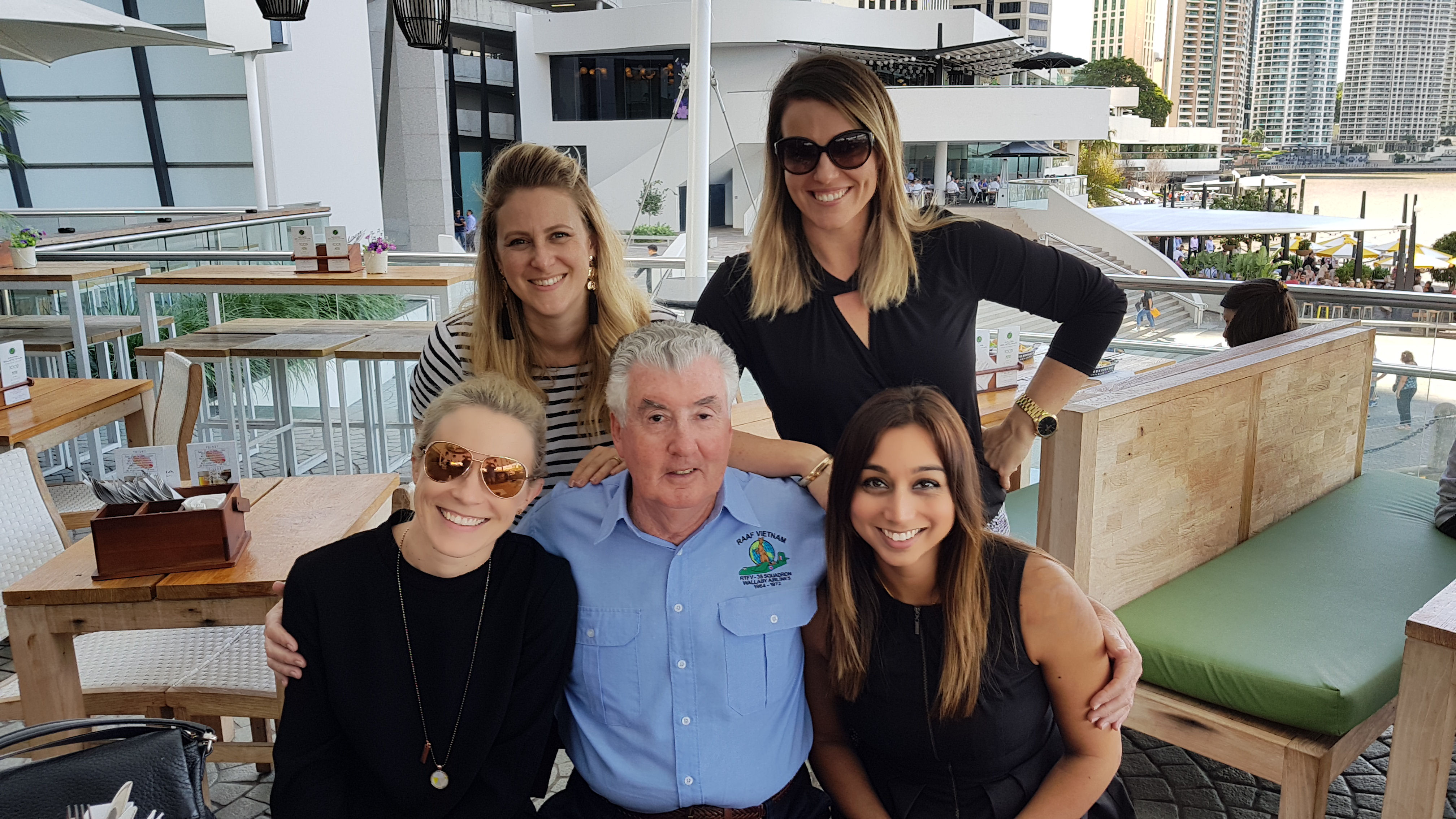

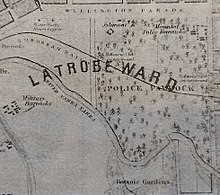
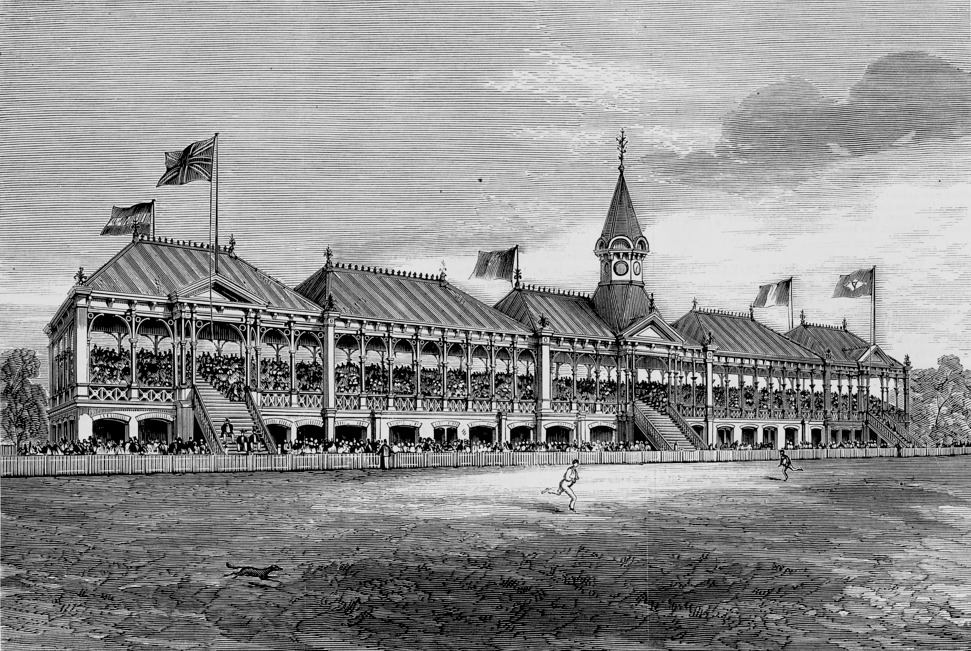
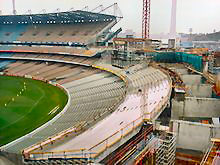
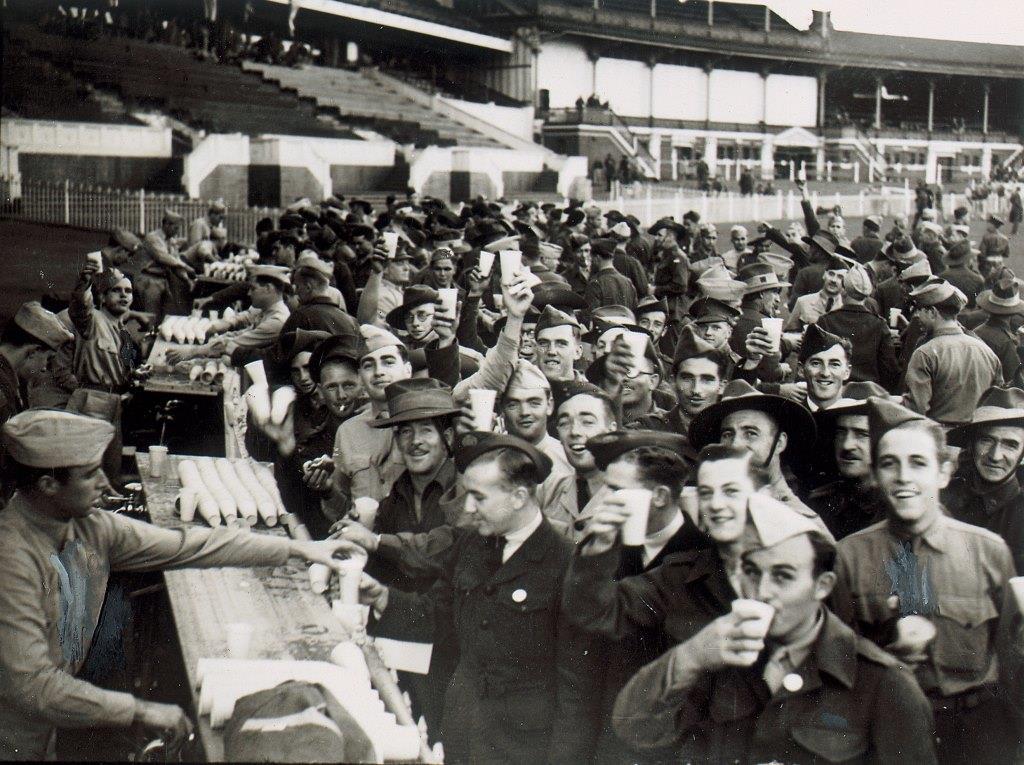
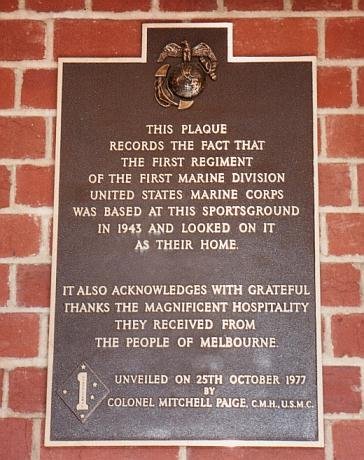
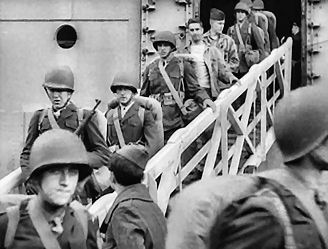
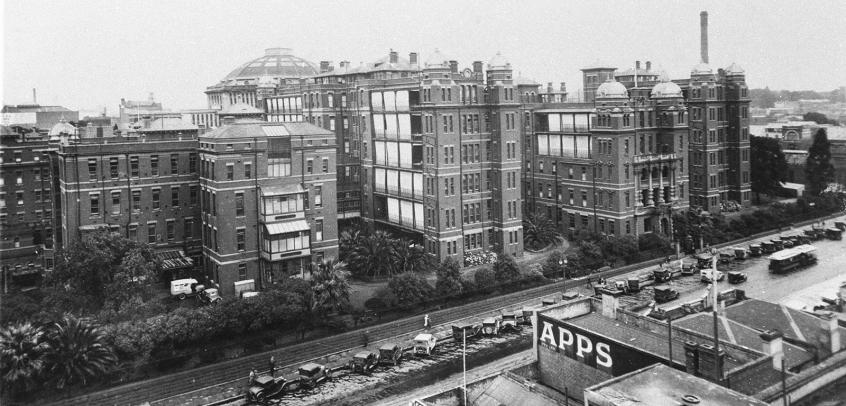
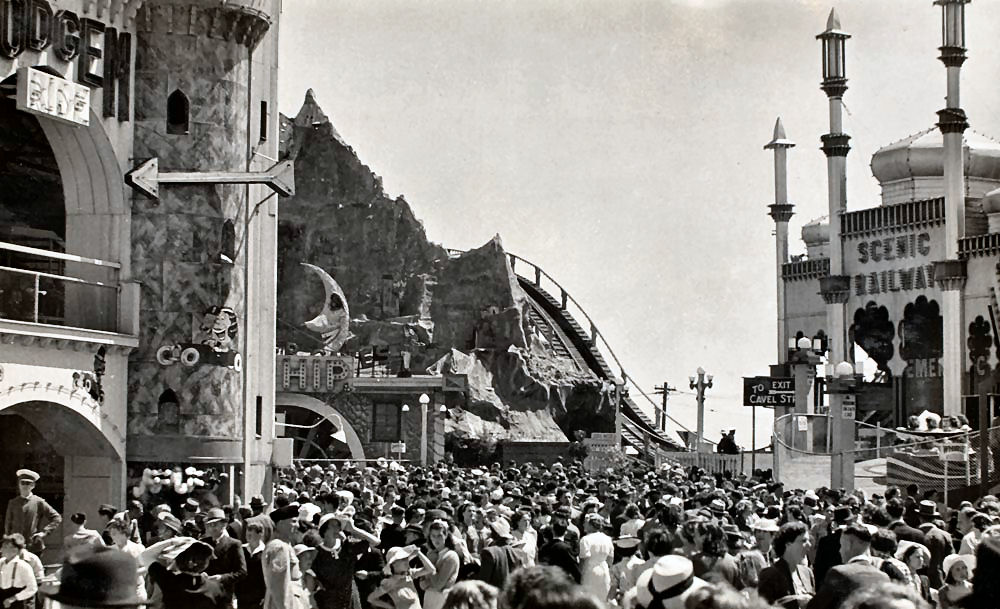
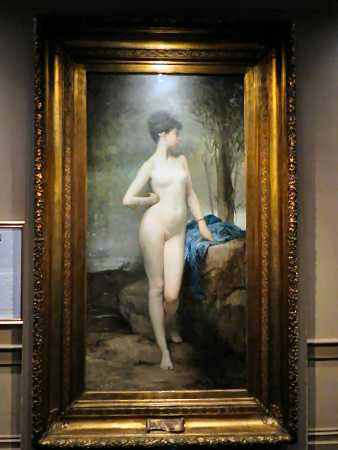 met their dates ‘under the clocks’ at Flinders Street and saw the
kangaroos and koalas at the Zoo. At Young and Jackson’s, they drank in
front of the painting of Chloe. They wandered the banks of ‘the
so-called “Dirty Yarra”’ and strolled through the gardens near the
Shrine. At the Trocadero, they danced to the big-band music of Frank
Coughlan and at the Palm Grove, Bob Gibson’s orchestra (See HERE) played
similar tunes, alternating with the First Marine Division Band.
met their dates ‘under the clocks’ at Flinders Street and saw the
kangaroos and koalas at the Zoo. At Young and Jackson’s, they drank in
front of the painting of Chloe. They wandered the banks of ‘the
so-called “Dirty Yarra”’ and strolled through the gardens near the
Shrine. At the Trocadero, they danced to the big-band music of Frank
Coughlan and at the Palm Grove, Bob Gibson’s orchestra (See HERE) played
similar tunes, alternating with the First Marine Division Band.